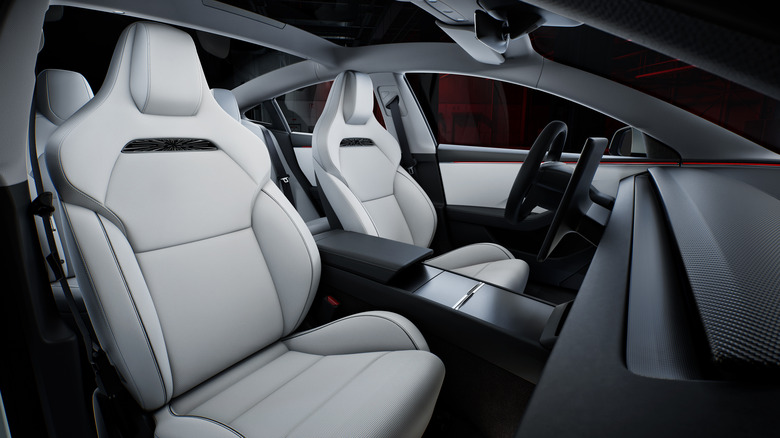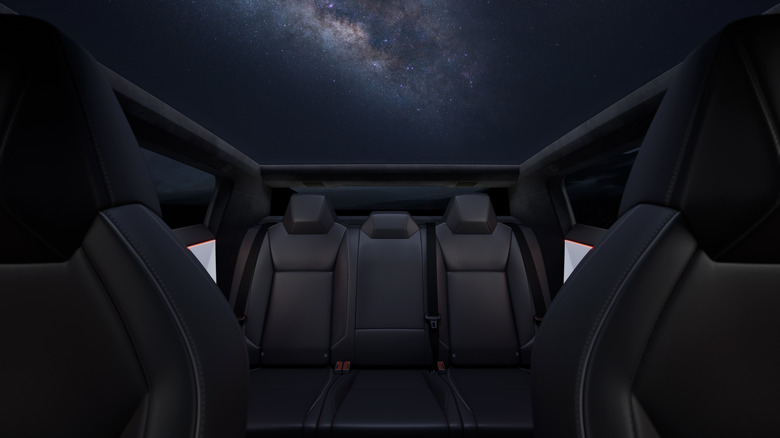Tesla Doesn't Use Real Leather, So What Is It?
Tesla vehicles have some very cool interior features, including seat upholstery that is called "vegan leather," which sounds like an oxymoron. How can it be both vegan and leather? Well, there's actually a story behind Tesla interiors that traces back to a stakeholder meeting in 2015. PETA (People for the Ethical Treatment of Animals) was present and apparently asked Tesla to become the first car manufacturer to remove all leather from its vehicles. Supposedly, the question hit a nerve, and by 2017, Tesla had completely removed cowhide from the seats of its cars, followed by the steering wheel covers a little later.
Tesla's switch to vegan leather was great for those who care about the environment, but what about the ownership experience? Is vegan leather as good as real leather when used as a seat and steering wheel covering? And what is it really made of? All vegan leather is either synthetic, like the vinyl seat material you may have experienced, or organic, meaning its made from plants like bamboo, eucalyptus, or cactus.
Since organic vegan leather hasn't yet been made durable or profitable enough to scale up for major commercial production, Tesla uses synthetic vegan leather. It's made using a combination of petroleum compounds and plastic chemicals to produce a polyurethane material. This polyurethane is created by taking polyester fabric and adding adhesive to it, with a top layer adding whatever color or other details the manufacturer wants to the material.
Have there been any problems with Tesla vegan leather?
Tesla's first use of vegan leather did not go smoothly. A few weeks after customers received the first Tesla cars with vegan leather seats, the material began to bubble and expand on the surface. The problem was particularly bad on the headrests. It turned out that high in-car temperatures caused a reaction with the occupants' hair products and skin oils to cause the bubbling of the polyester resin. Tesla disavowed any responsibility, since according to the company, this was strictly occupant-caused. It was recommended that drivers use solvents to clean the seats after each drive to solve this, and the use of harsh cleaning wipes on Teslas was not recommended as this can contribute to the problem.
Aside from the bubbling, vegan leather or pleather doesn't last as long as real leather and will crack and peel long before real leather would. You can't moisturize vegan leather like you can real leather, either. That's because vegan leather doesn't "breathe" like real leather, which was once an animal's skin. Plus, plastic-based vegan leather will not biodegrade, unlike cowhide.
On the positive side, there are reasons to support the use of vegan leather in Tesla cars. Although some may argue that real leather is actually better for the environment than vegan interiors, vegan leather is animal-friendly, cruelty-free, emits less greenhouse gases and CO2, and needs fewer toxic chemicals in the production process. It also looks similar to leather and is waterproof.

